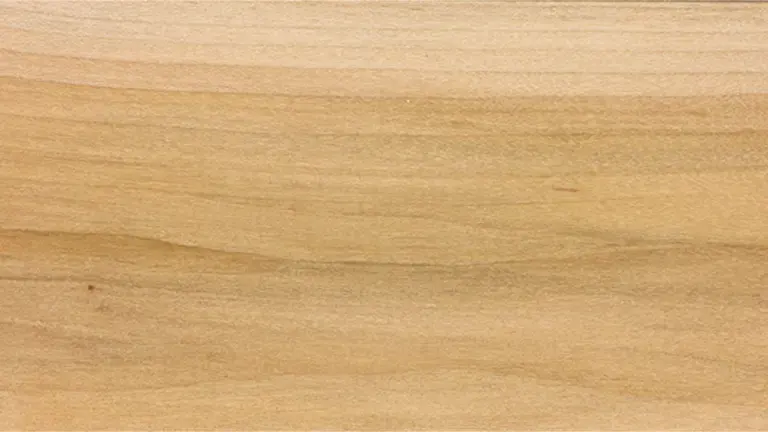Red Maple Lumber
- May 31, 2023
- 0 comment

Red Maple lumber, scientifically known as Acer rubrum, is a versatile hardwood that is native to Eastern North America. The heartwood of Red Maple varies in color from light to dark reddish-brown, while the sapwood is pale white or gray. With a straight or wavy grain and a fine, even texture, Red Maple lumber exhibits an attractive appearance. It is moderately lightweight, with an average dried weight of 37 lbs/ft3 (590 kg/m3) and a specific gravity of 0.59. Red Maple is relatively easy to work with both hand and machine tools, displaying good dimensional stability and holding finishes well. However, care must be taken to prevent burning during machining. While it lacks natural resistance to decay, Red Maple is sustainably sourced and commonly used in various applications such as furniture, cabinetry, flooring, millwork, veneer, musical instruments, and turned objects. It is important to note that Red Maple should not be confused with Sugar Maple, which is considered to have superior characteristics in woodworking. Overall, Red Maple lumber offers an appealing aesthetic and is readily available at moderate prices.
| Property | Value |
|---|---|
| Common Name(s) | Red Maple |
| Scientific Name | Acer rubrum |
| Distribution | Eastern North America |
| Tree Size | 60-90 ft (18-27 m) tall, 2-3 ft (0.6-0.9 m) trunk diameter |
| Average Dried Weight | 37 lbs/ft3 (590 kg/m3) |
| Specific Gravity | 0.59 |
| Janka Hardness | 950 lbf (4,220 N) |
| Modulus of Rupture | 13,200 psi (91 MPa) |
| Elastic Modulus | 1,710,000 psi (11.8 GPa) |
| Crushing Strength | 7,320 psi (50.5 MPa) |
| Shrinkage | Radial: 4.9%, Tangential: 9.3%, Volumetric: 13.6% |
Color/Appearance: The heartwood of Red Maple ranges from light to dark reddish-brown, while the sapwood is pale white or gray. The color tends to darken with age.
Grain/Texture: The grain of Red Maple is generally straight, but it can also have wavy or curly patterns. The texture is fine and even.
Rot Resistance: Red Maple is not naturally resistant to decay and is susceptible to fungal attacks. It is important to protect it from moisture to prevent rotting.
Workability: Red Maple is generally easy to work with both hand and machine tools. It has good dimensional stability and holds paint, stain, and glue well. However, the wood can sometimes have a tendency to burn when machined with high-speed cutters.
Odor: Red Maple typically has no characteristic odor.
Allergies/Toxicity: Red Maple is not known to cause any severe allergic reactions. However, as with any wood, it’s advisable to use proper dust protection when working with it.
Pricing/Availability: Red Maple lumber is generally available at moderate prices and can be found at most hardwood suppliers or lumberyards.
Sustainability: Red Maple is considered a sustainable wood choice. It is abundant in its native range and is not currently listed on any endangered species lists.
Common Uses
Color/Appearance: The heartwood of Red Maple ranges from light to dark reddish-brown, while the sapwood is pale white or gray. The color tends to darken with age.
Grain/Texture: The grain of Red Maple is generally straight, but it can also have wavy or curly patterns. The texture is fine and even.
Rot Resistance: Red Maple is not naturally resistant to decay and is susceptible to fungal attacks. It is important to protect it from moisture to prevent rotting.
Workability: Red Maple is generally easy to work with both hand and machine tools. It has good dimensional stability and holds paint, stain, and glue well. However, the wood can sometimes have a tendency to burn when machined with high-speed cutters.
Odor: Red Maple typically has no characteristic odor.
Allergies/Toxicity: Red Maple is not known to cause any severe allergic reactions. However, as with any wood, it’s advisable to use proper dust protection when working with it.
Pricing/Availability: Red Maple lumber is generally available at moderate prices and can be found at most hardwood suppliers or lumberyards.
Sustainability: Red Maple is considered a sustainable wood choice. It is abundant in its native range and is not currently listed on any endangered species lists.
Common Uses
Red Maple lumber finds a wide range of applications due to its attractive appearance and workability. Some of its common uses include:
- Furniture: Red Maple lumber is frequently used in furniture production. Its fine grain and reddish-brown color provide an appealing aesthetic for various furniture pieces such as tables, chairs, cabinets, and shelves.
- Cabinetry: The straight or wavy grain of Red Maple lends itself well to cabinetry. It is often used for kitchen cabinets, bathroom vanities, and other custom-built storage solutions.
- Flooring: Red Maple lumber is an excellent choice for hardwood flooring. Its durability, moderate hardness, and beautiful color make it a popular option for residential and commercial flooring applications.
- Interior Millwork: Red Maple is widely used in interior millwork, including moldings, trim, paneling, and stair parts. Its fine texture allows for smooth, detailed milling and enhances the overall aesthetics of interior spaces.
- Veneer: The attractive grain patterns and coloration of Red Maple make it suitable for veneer production. It is often used as a decorative surface layer for plywood, furniture, cabinets, and other interior applications.
- Musical Instruments: Red Maple is a preferred wood for certain musical instruments, especially stringed instruments like violins, cellos, and guitars. Its tonal qualities, stability, and visual appeal make it a popular choice for instrument makers.
- Turned Objects: The workability and fine texture of Red Maple make it well-suited for turning on a lathe. It is commonly used to create bowls, spindles, handles, and other decorative turned objects.
Harvesting Red Maple
Wood harvesting of Red Maple (Acer rubrum) involves specific considerations for this particular species:
- Tree Selection: Red Maple trees suitable for harvesting are identified based on factors such as age, size, and overall health. Preference is often given to mature trees with well-developed trunks and straight growth patterns.
- Seasonal Timing: Red Maple harvesting is typically done during the dormant season, which is late fall or winter. During this period, the sap content is lower, resulting in improved drying characteristics and reduced risk of staining or degradation.
- Felling: Red Maple trees are carefully felled using chainsaws or specialized harvesting equipment. Attention is given to the direction of the fall to minimize damage to surrounding trees and vegetation.
- Sorting and Skidding: Once felled, the tree trunks are sorted based on their quality and size. Red Maple logs are relatively lighter than some other hardwood species, making them easier to handle during skidding, which is the process of moving the logs to a central collection point using tractors or skidders.
- Log Grading: Red Maple logs are graded based on their diameter, length, and overall quality. This grading process helps determine the most suitable applications for the resulting lumber.
- Sawmilling and Processing: Red Maple logs are transported to sawmills or processing facilities, where they are debarked and sawn into lumber. The logs are carefully assessed to maximize yield and minimize waste. The sawing process produces boards, planks, or veneer sheets of various dimensions.
- Drying and Conditioning: After sawmilling, Red Maple lumber is dried to reduce its moisture content. Kiln drying or air drying methods are used to bring the lumber to a suitable moisture level for woodworking. Proper drying helps enhance the stability and durability of the wood.
- Quality Control: Throughout the harvesting and processing stages, quality control measures are implemented to ensure the final Red Maple lumber meets industry standards. This involves inspecting the lumber for defects, such as knots or splits, and removing or segregating any substandard pieces.
- Distribution and Utilization: The processed Red Maple lumber is distributed to manufacturers, woodworkers, and construction projects. It is commonly available at hardwood suppliers, lumberyards, and other retail outlets for a variety of woodworking applications.
Comments
Red Maple is a versatile hardwood with an attractive appearance. It is important to note that it is different from the more highly regarded Sugar Maple (Acer saccharum). While Red Maple can be used for similar purposes, Sugar Maple is generally considered to have better characteristics and a higher value in woodworking.
Please keep in mind that the provided information is based on general characteristics and may vary depending on the specific piece of wood. It’s always recommended to consult local suppliers or experts for more detailed and up-to-date information on Red Maple lumber.














Leave your comment